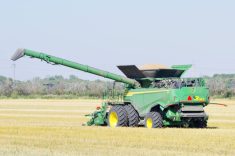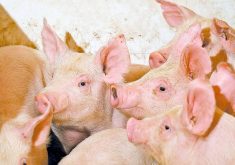While many Canadians were enjoying backyard barbecues this summer after months of being isolated from family and friends, the country quietly embarked on a new era of trade with two of its largest trading partners.
The U.S.-Mexico-Canada Agreement (USMCA), referred to as the CUSMA in Canadian documents, came into force to replace the North American Free Trade Agreement. The reaction from much of the agricultural sector was more of relief than celebration. As Canadian Cattlemen’s Association president Bob Lowe described it, the new deal is “timely and welcome” because it brings “continued economic stability.”
Read Also

Calling all farmers: What do you want us to ask at the Ag in Motion farm show?
Ag in Motion is back July 15-17, 2025; we want to know the production questions you need our reporters to ask
In other words, the real gain for the export-oriented agricultural sectors was no loss.
The new deal contained some expensive concessions for certain sectors, namely dairy and poultry, but access to the coveted U.S. market was mostly preserved for other commodities such as beef, pork and wheat.
The U.S. and Mexico are typically Canadian farmers’ first- and fourth-largest export markets. The arrival of a scrappy White House administration that showed no reverence for the hard-fought gains in global rules-based trading over the past three decades had the entire sector on edge.
Farmers and processors are well aware that they make easy targets when foreign interests have a bone to pick with the Canadian government. Hitting agricultural commodities with tariffs or non-tariff barriers gets lots of media attention because producer groups are well organized and vocal. Economic impacts aside, governments are also sensitive to any actions that might jeopardize their country’s ability to produce food.
China showed its displeasure with Canada’s arrest of the Huawei executive by throwing two Canadian citizens in jail and blocking shipments of canola seed from two of Canada’s largest exporters.
It created a bizarre scenario in which Canadian canola producers were co-opted into pushing China’s cause by pressuring their government to do pretty much anything to restore access to an important customer.
Less widely known is that canola sales to China continued. Export documents show that significant volumes of the raw seed no longer allowed into China started flowing to the UAE, where it was being crushed and shipped to China as vegetable oil. Considering sales of all grains, China is by far Canada’s biggest customer so far this year.
In an equally bizarre scenario, U.S. President Donald Trump attacked Canadian domestic dairy policy. The complaint wasn’t that Canada was unfairly sending dairy into the U.S., it was that the U.S. wanted the ability to dump surplus U.S. dairy into Canada.
Agricultural sectors anxious to maintain their market access to the U.S. were quick to line up to support the U.S. posturing. Trump also got help from some Canadian commentators who pressured the government to make concessions on the premise that increased competition from the U.S. would result in lower grocery prices for dairy products.
Faced with the prospect of losing potential gains exceeding US$5 billion over an estimated US$600-million influx of U.S. dairy products onto the Canadian market, Canadian negotiators pragmatically opted to offer compensation to Canadian dairy farmers in the interests keeping key elements of the former NAFTA intact.
In another twist, the July 1 implementation date is a month earlier than the Aug. 1 start of the dairy-marketing year. That early implementation is estimated to have cost Canadian dairy farmers an extra $100 million over and above the concessions on market access because it brings the new provisions into force ahead of expected timelines.
The federal government also conceded on regulations that were perceived as blocking U.S. farmers from selling grain to Canadian elevators. It’s unclear why they’d even want to because the U.S. system typically has better transportation and pricing options. Nevertheless, grading changes effective July 1 removed any barriers that existed, but in a way designed to protect the integrity of Canada’s unique quality parameters.
As Canada’s trade and political relationship with China continues to sour, Canadian farmers are hoping this new deal with the U.S. will lay some of the uncertainty over access to exports to rest.
But with a U.S. presidential election on the horizon, there are no guarantees that the shenanigans are over.



















